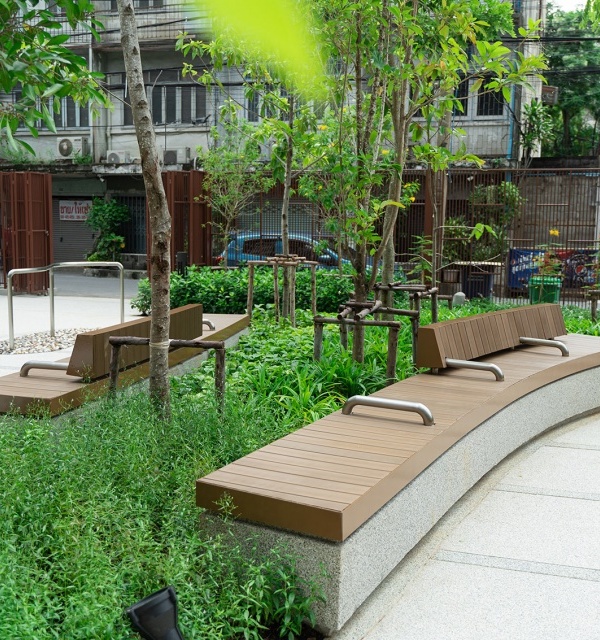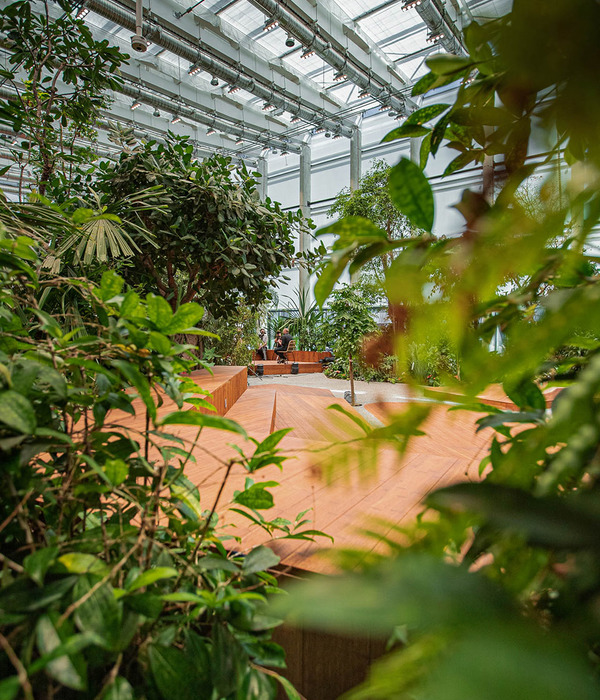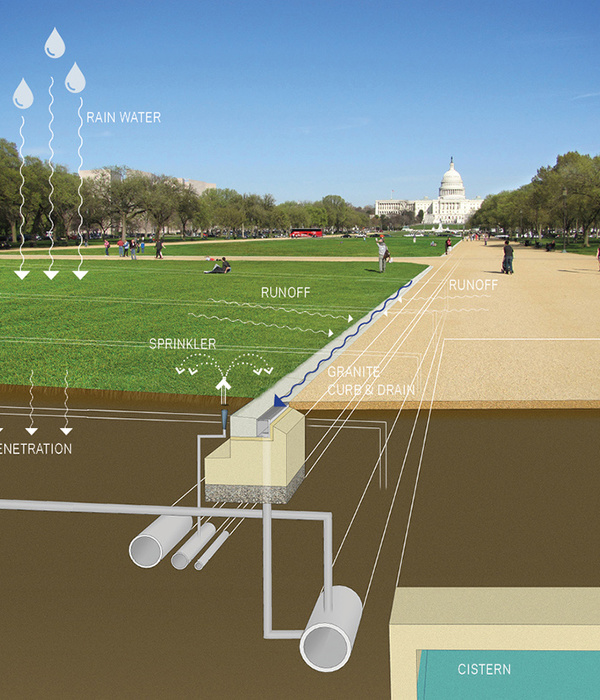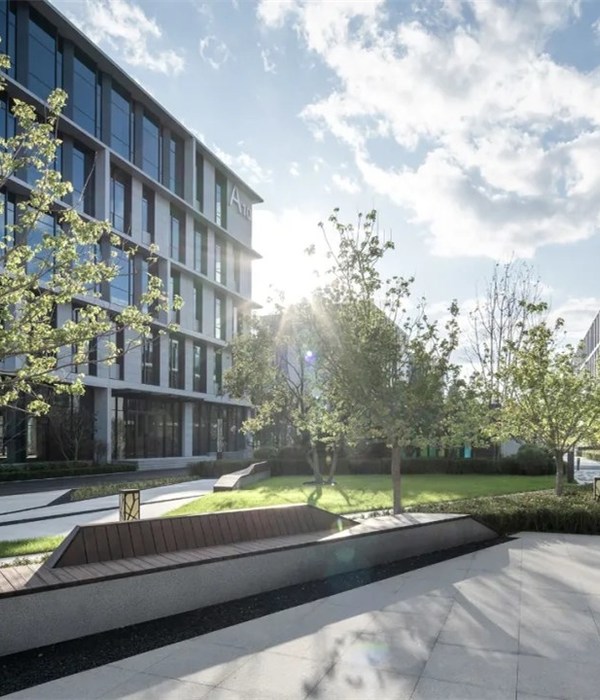- 项目名称:合肥天璞 | 旧厂新生,城市更新地标
- 甲方团队:合肥皖京房地产开发有限公司
- 设计部门:设计一所
- 设计总监:孟一军
- 后期团队:赵亮,朱亮,黄晓雷,汪珊珊,陆伟,黄兰萍,姬林波
- 植物团队:何文红,娄晋南
- 水电结构:任立,王俊睿
- 施工单位:南京韵涵园林景观工程有限公司
- 摄影机构:琢墨建筑摄影
广亩景观:城市更新,旧地改造,是城市发展的必经之路,作为合肥工业的重要起源地,这里仍保留着苏联时期的工业遗存,昔年里热火朝天的江淮汽车厂,只留下了一面面堆砌的高墙……
GM landscape design: As an important origin of Hefei industry, the industrial remains of the Soviet era are still preserved here. In the past years, the JAC automobile factory, which was in full swing, now only left high dilapidated walls……
▼场地鸟瞰 Aerial view
龙湖合肥天璞项目,一个由废置的江淮汽车车桥厂旧改而成的老城区新地标,旨在为周边居民带来放松休闲的社区活动空间,也为瑶海老工业区带来了值得驻足的一抹时代亮色。
LONGFOR MANSION, a new landmark in the old city converted from the abandoned JAC Automobile Axle Factory, aims to bring a relaxing and leisure community activity space for the surrounding residents, and also brings a bright color of the Times to the old industrial area of Yaohai District.
瑶海作为全国城区老工业区搬迁改造首批试点区,在本次的街区改造中,我们充分考虑到区域特色及与周围环境的融合性,将车桥厂地块打造成街区花园的模式。
Yaohai District, as the first pilot area for the relocation and transformation of old industrial areas in modern cities nationwide, took into full consideration the regional characteristics and the integration with the surrounding environment in this block transformation, and made the car and bridge factory site into a model garden district.
原本的场地是个围墙包裹的纯封闭空间,在项目的探索阶段,我们与龙湖集团的目标就是推倒这些高墙,开放整个空间,将项目与城市、城市的居民们交织在一起。
The original site was a purely enclosed space wrapped in walls. During the exploration phase of the project, our goal with LONGFOR was to bring down these high walls and open up the entire space, intertwining the project with the city and its inhabitants.
改造后的天璞,场地空间开敞,与城市对话,不论从哪个角度,车流穿梭,行人来去,都能感受到它开放的姿态,愿与城市共融。
After the renovation, LONGFOR MANSION, with its open space and dialogue with the city, can feel its open posture. The traffic flows through, pedestrians come and go, all can touch its willingness to be in harmony with the city.
在高差的处理上,设计师采用分级台阶的形式,不仅从视觉上缓和了冲击,同时也配合整体造型将无障碍通道结合进来。
As to the height difference, the designer uses the form of graded steps, which not only visually eases the impact, but also combines the barrier-free access with the overall shape.
▼开阔的入口广场为丰富市民活动提供了更多可能 The open entrance plaza provides more possibilities for enriching citizen activities
避免常规无障碍通道对于整体风格的影响,因势而建的平台也在红线范围内不断退让,给予市民更多活动的空间。
Avoiding the influence of conventional barrier-free access to the overall style, the platform built by the situation is also continuously set back within the red line to give the public more space to move around.
改造项目离不开对保留与创造的平衡和思考。在经过了对整个场地的利用率分析之后,结合场地特色属性,设计师们做出了取舍,也因势利导,奠定了整体景观走向。
The renovation project cannot be separated from the balance and consideration of preservation and creation. After analyzing the utilization rate of the whole site, the designers made trade-offs in combination with the characteristic properties of the site, and also took advantage of the situation to lay down the overall landscape direction.
十年育树,百年育人,主体建筑周边的乔木都被完好地保留了下来,勾勒出了景观的形制走向。
Ten years to nurture trees, and a hundred with people. The trees around the main building are well preserved, outlining the shape of the landscape towards.
贯穿整个场地的流线,从场地自身条件来看是依树而生的浑然天成。从情怀来看,却也是“车桥”元素的景观承载。错落拱起的弧形肩负着合肥工业区的时代印记,平行变化的线条连接着城市的古今变迁。
The flow line running through the whole site, from the site’s own condition, is a natural formation based on trees. Sentimentally speaking, it is also the landscape bearing of the element of “the axle”. The arcs of the staggered arcs bear the marks of the era of Hefei industrial area, and the parallel changing lines connect the ancient and modern changes of the city.
依树建造的休闲吧台与座椅,为周围居民提供了绝佳休憩场所。
The relaxation bar and seatings built around the trees provide a great resting place for the surrounding residents.
拆改部分建筑打造的社区客厅,每当华灯初上,灯光装点着阶梯,斑驳了红砖,较之白天的娴静,又是另一番现代的摩登。
The community living room is created by demolishing part of the building. When the lights on, they decorate the stairs and dapple the red bricks, which is another modernity compared with the quietness in the daytime.
▼改造前 Before transformation
景观设计:广亩景观
设计部门:设计一所
设计总监:孟一军
设计团队:曹博之,许多,補怡
后期团队:赵亮,朱亮,黄晓雷,汪珊珊,陆伟,黄兰萍,姬林波
植物团队:何文红,娄晋南
水电结构:任立,王俊睿
甲方团队:詹明珠,穆焕伟,万成学
景观面积:5225㎡
开发单位:合肥皖京房地产开发有限公司
施工单位:南京韵涵园林景观工程有限公司
摄影机构:琢墨建筑摄影
Landscape Design: GM Landscape Design
Design Department: No.1 Design Institute
Design Director: Meng Yijun
Design Team: Cao Bozhi, Xu Duo, Bu Yi
Final-period Team: Zhao Liang, Zhu Liang, Huang Xiaolei, Wang Shanshan, Lu Wei, Huang Lanping, Ji Linbo
Planting Team: He Wenhong, Lou Jinnan
Water-electrical Structure: Ren Li, Wang Junrui
Team of Party A: Zhan Mingzhu, Mu Huanwei, Wan Chengxue
Landscape Area: 5225㎡
Developer: Hefei Wanjing Real Estate Development Co., Ltd
Construction: Nanjing Yunhan Landscape Engineering Co., Ltd
Photo Credit: ZOOM
{{item.text_origin}}












